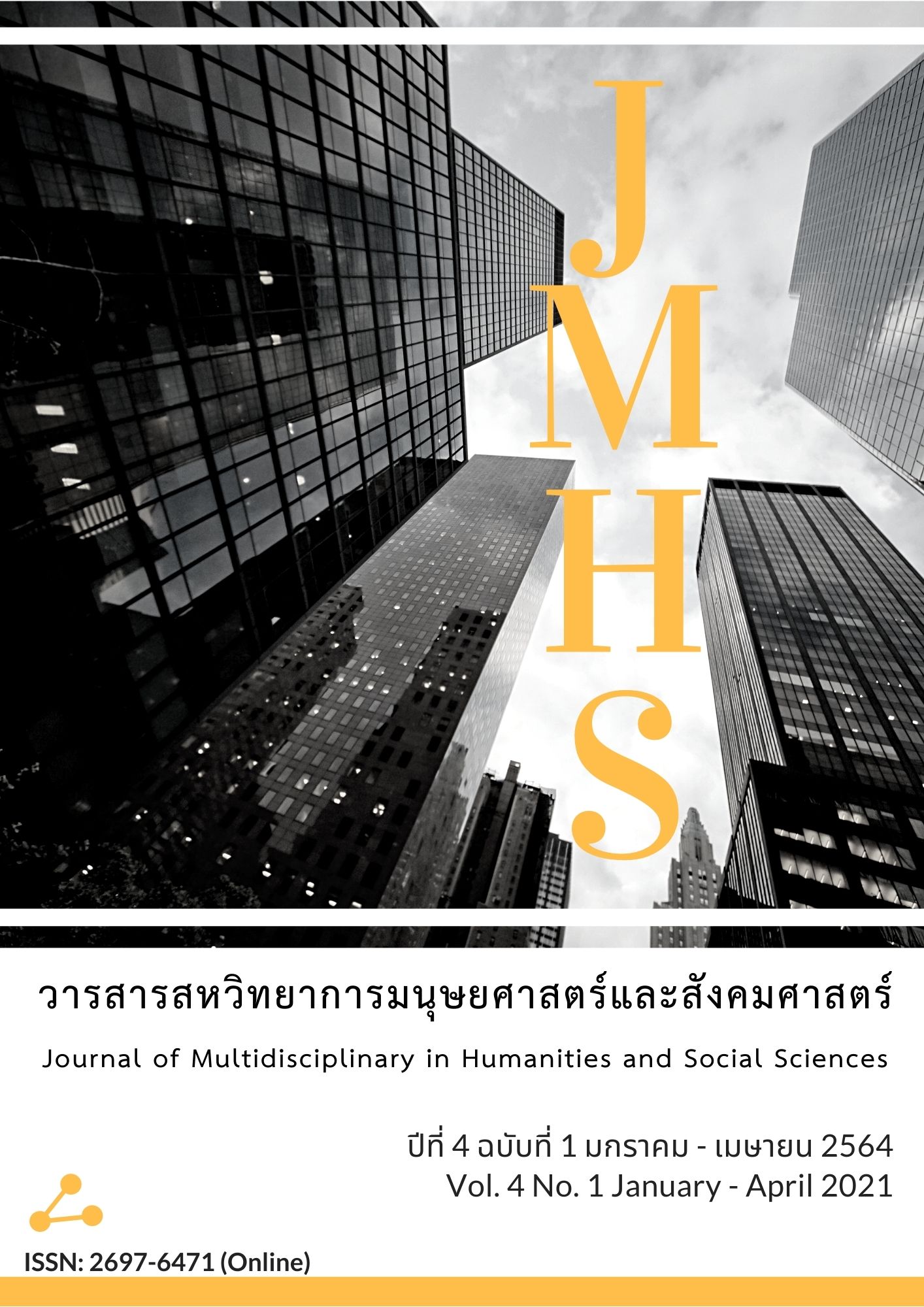Human Resource Development to Accommodate the Public and Private Sector Organizations in the Digital Age
Main Article Content
Abstract
This Article aimed to study human resource development to accommodate the public and private sector organizations in the digital age. The study was qualitative in nature. The needed data were collected from documents, non-participant observations and in-depth interviews with 12 key informants. The key informants, who are executives in state-of-the-art public and private organizations focus on human resource development by using digital to manage and perform tasks and meet the requirements, were selected by means of purposive sampling technique. The analysis data were presented by using descriptive statistics. The research results were found that on values concerning to HRD, the values have to be consistent with the vision and mission of the organization. The values should be used as a means to creating desirable behaviors of the personnel in the organization. In addition, HRM and HRD process must start from recruitment and selection process in order to find the right candidates. Another finding was various channels should be created with a view to transmitting internal and external information to the personnel in the organization.
Knowledge from this research should be applied to help employees develop their skills, knowledge, and abilities, which in turn improves organizations’ effectiveness in the digital age. The new HRD’s rolls are helping and developing the “new breeds” in the organizations. The new breeds are employees who are not only good at their job, but also good at their hearts.
Article Details
Views and opinions appearing in the Journal it is the responsibility of the author of the article, and does not constitute the view and responsibility of the editorial team.
References
ชาญวิทย์ วสันต์ธนารัตน์. (2553). Change…เพื่อสร้างความสุขในองค์กร. สืบค้นจาก http://www.wiseknow.com/blog/2009/05/22/2534/#axzz1XM0jYg4j.
พยอม วงศ์สารศรี. (2543). องค์การและการจัดการ. กรุงเทพฯ: สุภา.
ศรุตา สมพอง และวัชรินทร์ อินทรพรหม. (2550). ทัศนคติมุ่งสู่ความเป็นเลิศ, ทุนมูลนิธิพันเอกจินดา ณ สงขลา ประจำปี พ.ศ. 2548. สำนักวิจัยและพัฒนาระบบงานบุคคล, สำนักงานคณะกรรม การข้าราชการพลเรือน (ก.พ.).
สมบัติ กุสุมาวลี. (2559). HR 4.0 Trends and Move ทิศทางการบริหารจัดการทรัพยากรมนุษย์@Thailand 4.0. HR Society Magazine, 14(164), 36-39.
สะเต็มศึกษา ประเทศไทย (2562). รู้จักสะเต็ม. สืบค้นจาก http://www.stemedthailand.org/?page_id=23.
สำนักงานคณะกรรมการข้าราชการพลเรือน (ก.พ.). (2562). การพัฒนาทักษะความเข้าใจและใช้เทคโนโลยีดิจิทัล. สืบค้นจาก https://www.ocsc.go.th/DLProject/about-dlp.%20p6.
วิลาศ เรียงแหลม. (2561). รูปแบบการพัฒนาทรัพยากรมนุษย์เชิงยุทธศาสตร์ของกองทัพเรือ (ดุษฎีนิพนธ์ปรัชญาดุษฎีบัณฑิต). มหาวิทยาลัยรามคำแหง.
อรนิตย์ ธรเสนา. (2558). การพัฒนาทรัพยากรมนุษย์: กรณีศึกษาสถาบันพัฒนาข้าราชการกรุงเทพมหานคร (วิทยานิพนธ์รัฐศาสตรมหาบัณฑิต). มหาวิทยาลัยรามคำแหง.
Glisson, C., & Durick, M. (1998). Predictors of Job Satisfaction and Organizational Commitment in Human Service Organization. Administrative Science Quarterly, 33(1), 61-81.
Herzberg, F. et al. (1959). The Motivation to Work. New York: John Wiley and Sons.
Miles, M. B., & Huberman, A. M. (1994). An expanded sourcebook Qualitative Data Analysis. London: Sage Publications.
Nadler, L., & Nadler, Z. (1998). Corporate Human Resource Development. New York: Van Nostrand Reinhold.


